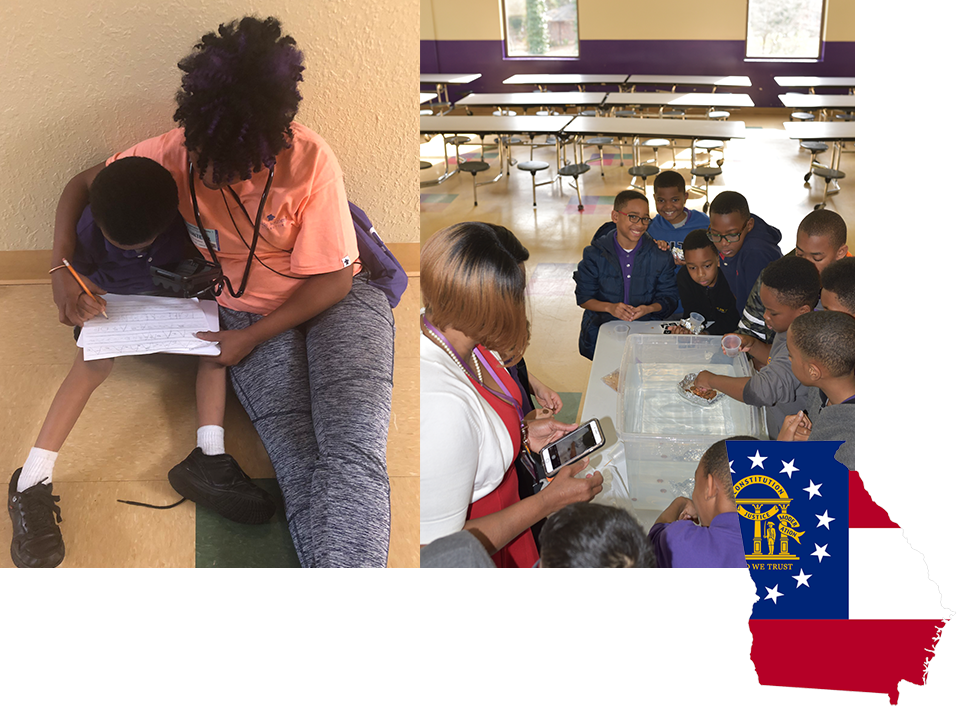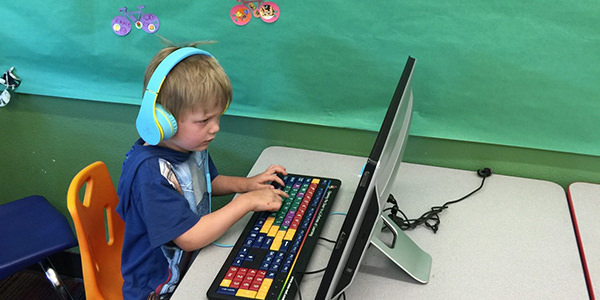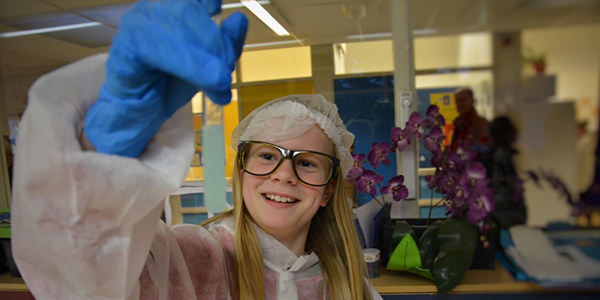The purpose of this page is to show some of the wide array of results after school programs foster for scholars, their families, and their communities.
Parents and Officials please find a sampling of resources and research that explore the benefits of afterschool programs below.
Jodi Grant
Executive Director of the nonprofit Afterschool Alliance
Georgia Facts
A 2020 evaluation by the Georgia Department of Education found that, based on teacher surveys, more than 8 in 10 21st CCLC (21st Century Community Learning Center) students regularly participating in the program improved their homework completion (85%) and classroom behavior (82%). An overwhelming majority of students in the program (89%) and parents (96%) surveyed reported that they were satisfied overall with their 21st CCLC program.

Overall Benefits
Here are just a few benefits parents and students receive via Afterschool programs. Please find many of the research and reports that back up these listed benefits below.

After school programs can re-introduce creativity back into those important daily routines, giving kids that outlet to innovate, explore, and again, build confidence, and what’s more, have fun…

Attending afterschool programs leads to improvement in class participation, better adjustment as young people move to the next phase of schooling, increased school day attendance and participation, and reduced school dropout rates.

Increased adult supervision makes youth feel safer and reduces instances of being left unsupervised with peers out of school. Also promotes personal safety and decreases risky behaviors such as smoking or drug abuse, but also creates an environment where young people learn better and are able to thrive.

Afterschool programs can also improve young people’s dietary snack consumption and provide a monitored outlet for exercise, activities and games that improve the health and fitness of children.

Getting homework done after school can make everyone’s evening more pleasant. Programs employ teachers or aides who are equipped to handle kids who struggle with homework.

Builds interest in Science, Technology, Engineering, Arts, and Math fields. Students have a long-lasting opportunity to learn about and experiment in a variety of subjects that align with their passions and interests.

When students are able to gain experience and build confidence in an area they actually want to pursue as a career, like coding or robotics, that confidence can have a greater impact.

Kids in afterschool programs are more likely to be included and feel like they’re part of a group. These programs often have more adult supervision than playground time offered during recess or P.E.

It’s a fun and meaningful way for kids to work with other kids in areas they enjoy. Programs may also offer arts options like drama and music, which can help kids find new interests.
Research Links
Please find links to several research documents and specific results that underscore the benefits of afterschool programs in this section. Please find three links below for time saving specialized reports that cover a very wide swath of data related to Afterschool Programs results (over 70 research studies).
Sustained participation in high-quality afterschool programs in early grades yields benefits that last into adolescence.
Consistent participation in afterschool builds students’ confidence in interacting with adults and peers, which bodes well for their future success.
View Full Study: https://www.nichd.nih.gov/research/supported/seccyd/overview
Effective afterschool programs provide learning settings that bring a wide range of benefits to youth, families, and communities. Afterschool programs can support social, emotional, cognitive, and academic development, reduce risky behaviors, promote physical health, and provide a safe and supportive environment for children and youth.
Afterschool programs also provide a significant return-on-investment, with every $1 invested saving at least $3 through increasing youth’s earning potential, improving their performance at school, and reducing crime and juvenile delinquency.
Created by Federal Government
Consistent participation in afterschool programs has shown lower dropout rates and has helped close achievement gaps for low-income students. For older youth, regular participation in an afterschool program may also reduce risky behaviors and help them gain college and career-needed skills.
Advantages Included:
This study of 1,755 working parents of school-age children at one of three Fortune 100 companies focused on assessing parental stress.
Based on parents surveyed, the study estimates that approximately 50 million parents are potentially over-stressed by parental concern about afterschool time (PCAST)—which is when parents are worried about what their children are doing during the hours after school—and are likely to bring their concerns to the office.
The study found that parental worries about what their children are doing after school makes mothers and fathers less productive at work and contributes to employee stress, costing businesses between $50 billion and $300 billion annually in lost productivity.
Elementary school students who regularly attended high-quality afterschool programs (alone or in combination with other activities) across two years demonstrated significant gains in standardized math test scores, compared to their peers who were routinely unsupervised during afterschool hours.
Regular participation in the programs was associated with gains of 20 percentiles in math achievement test scores over the two-year period for the Program Plus group relative to the Low Supervision group.
Program Only and Program Plus students also posted gains in teacher reports of work habits (effect sizes of .31 and .35, respectively) and task persistence (.23 and .30, respectively) over the two-year period. The students also reported gains in their work habits (effect sizes = .24 to .41). These gains in work habits and task persistence may have provided important support that contributed to the gains in math achievement.
(SEE PAGE 5)
Middle school students who regularly attended the high-quality afterschool programs (alone or in combination with other activities) across two years demonstrated significant gains in standardized math test scores, compared to their peers who were routinely unsupervised during afterschool hours.
Regular participation in the programs was associated with gains of 12 percentiles in math achievement test scores over the two-year period, relative to students who were routinely unsupervised after school.
(SEE PAGE 6)
A meta-analysis of 35 evaluations examining the academic impact of out-of-school time (OST) programs, specifically programs serving students at risk for school failure, a population that includes students who were not performing well academically in school or students who had characteristics associated with dropping out of school.
The meta-analysis found that programs have a statistically significant positive impact on both the reading and math achievement of students participating in the program.
Afterschool programs often support noncognitive factors through
programming that is explicitly aligned with school-day learning and targets
the improvement of competencies that influence school-related behaviors.
Consistent participation led to improvements in peer relationships, sense of
self-worth, altruism, and prosocial behavior and decreased problem behavior.
These studies looked at traditional school-based afterschool extracurricular
activities such as clubs, sports, tutoring, and honor society.1
Participation in STEM-focused afterschool programs led to major, positive changes in students’ attitudes toward science. More than 70% of students reported positive gains in areas such as STEM interest, STEM identity, STEM career interest and career knowledge, and 21st-century skills, including perseverance and critical thinking.
Female students were more likely to report gains in relationships with adults and peers in numbers significantly higher than their male counterparts.
Larger positive effects were also noted in students who participated in their programs for a minimum of four weeks.
There was a quality-related effect on student outcomes, such that students participating in higher quality STEM programs reported more positive gains than students participating in lower quality STEM programs.
The Global Tech Team will get back to you with answers and solutions.
Global Tech Academy